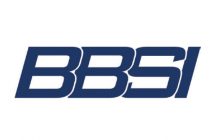Remember not all that long ago when there were predictions that, because of technology, we’d soon become a paperless society? Of course, that hasn’t happened. In fact, paper usage is rising by at least 20 percent per year, with the typical business generating up to two pounds of wastepaper per employee per day. That doesn’t even begin to include the amount of paper that’s printed and stored somewhere on a daily basis.
For manufacturers looking to accelerate growth, reduce costs and improve the profitability of their business, one of the first places they should look at is going green and doing the right thing for the environment. Why, you might ask?
“That’s because paper and paper usage is really a hiding place for huge amounts of time, effort, inefficiency and costs. Paper waste really wastes more than just paper,” explains Greg Lake, president and CEO of The Lake Companies, a company that helps manufacturers leverage technology in innovative ways to become more efficient and effective.
“Technology is usually not the first place you think of when going green, but the right technology can produce dramatic reductions in paper use as well as saving time and hard dollars for your business that are hiding behind that paper. The key is combining the right software with innovative approaches to solving time and technology challenges.
“Too often software technology in manufacturing is cobbled together; a system for sales, purchasing and accounting, another for CRM, and still another out on the shop floor,” adds Lake. “No matter what their size, as businesses grow, there’s a tendency to buy department driven, point specific applications without taking a good look at what the company needs as a whole. In fact, we’ve seen entire facilities where few of the departments had compatible systems. Imagine a system consisting of low end accounting software, combined with numerous spreadsheets used for everything from financial statements, to inventory, to bills-of–material, all basically duct taped together with paper and redundant manually data entry.”
The reality for this type of company as well as those using older Enterprise Resource Planning (ERP) systems is that any new application looks better than what they have now. And so the departmental duct tape process begins. Unfortunately, the result is that employees waste a lot time not remotely aware of what innovation, manual effort and paper savings are built into modern technology. Instead, companies use a lot of paper printing out drawings, tracking orders and job status reports, photocopying and distributing updates, punching and compiling time cards and payroll info, and finding room in overstuffed file cabinets for the necessary paper trail.
What it comes down to is a company has to be absolutely determined to get rid of as much paper as possible. A person or a group of people cannot scale their ability to push paper. When people can’t scale, a company cannot scale without scaling their costs along the way. When the paper usage gets great enough, the company has to add more people to handle it.
However, if a company can wage war on paper and look to being a green, environmentally friendly company by finding a modern, innovative application that spans the entire company, electronically automating the paper process, both internally, as well as to prospects, customers, subcontractors and vendors, the results are enormous. Removing paper also removes manual data manipulation, which allows a company to scale. You come to realize that automating the efforts of people, handling it with systems that work day and night, weekends and holidays really does save money, time, people costs, while allowing the business to scale by factors of 2x and far more. The business breakthrough is companies realize what was impossible to realize before, which is how much effort goes into managing paper and duct tape systems.
“Unfortunately what happens is that, for a while, a company continues to invest in more people and more file rooms and continues to buy and generate more paper,” explains Lake. “Eventually though, you have to take a look at other solutions and technology should be the first step.”
Lake recommends manufacturers determine their business growth goals. Next, find out what the barriers to getting there from an operational aspect. Assume you can sell the product, but what is it that will keep you from making what you sell. The first thing most CEO’s think about is new automated equipment. That does improve speed, quality and flexibility far beyond what older equipment can live up to. If it can happen on the shop floor, then why can’t the same thing happen in the office?
“Ask a lot of questions,” he says. “A well designed document automation system should not just be compatible with your ERP system, it should live within it and be accessible throughout your organization, from the president down to the shop floor.
“It should provide just what each person needs to be easy enough for anyone to use, while providing necessary security for sensitive documents. It should provide solutions to your daily process challenges.” So sales sees the exact same documents as their prospects and customers…without paper, some of those same documents, like packaging requirements and customer supplied drawings are seen out on the shop floor, again without paper. Customers and accounting see the exact same statement, purchasing and the vendor see the exact same purchase order, including specifications and drawings, all without paper.
The tangible results of using a system that meets the overall needs of a company are real savings in time and money as well as a positive impact on the environment. Nick Goodman of American Excelsior Company, a Lake Companies client, says a key focus is having a system that is accessible to everyone across the board; a system that gathers, bundles and archives electronic documents, “We’ve streamlined our operations, improved work flow and increased productivity.”
He adds, “Because of the system, some of our employees have several more hours a day to do the kind of work that really counts as opposed to dealing with manually tracking and printing reports. In fact, without even considering gains in the office, we have reduced our shop floor printing costs alone by 90 percent.” In addition, the need for more file room storage has also decreased.
While not all manufacturers will see a 90 percent decrease in printing costs by using a comprehensive technology system, even smaller decreases will produce noticeable results as well as increases in efficiency and productivity. “These are the kind of results where everyone wins, including the environment. The real result is speed, and speed scales,” Lake says.




